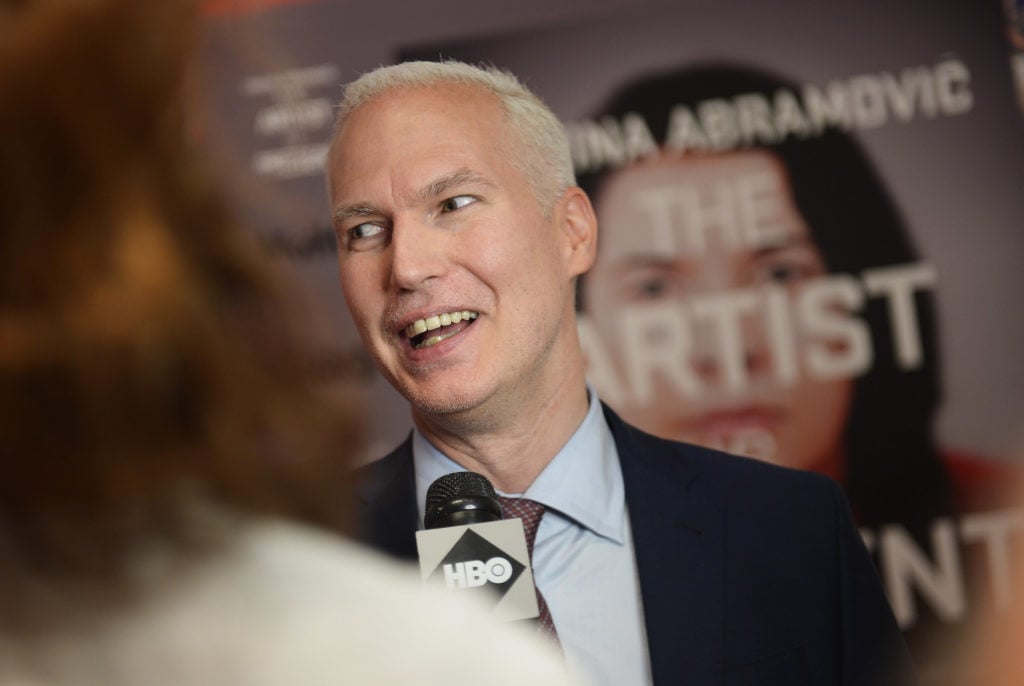When Klaus Biesenbach took the corner office as director of the Museum of Contemporary Art in Los Angeles, he gave up most of the trappings of his former life as a curator, swapping checklists for checkbooks. But there was one part of the job he couldn’t let go: studio visits. Now, even as the museum is closed and contending with steep, painful budget cuts and layoffs, he is continuing the practice, and inviting the public to come along.
“I don’t miss objects in my empty warehouse here right now,” Biesenbach said by phone from Los Angeles last week, “but I miss studio visits. And I always feel that they are a such a privilege… and if you have done a thousand of them, you have a routine, and your service can be to share this access.”
In recent weeks, Biesenbach has hopped on Zoom to speak to artists he’s known for years, including Shirin Neshat (speaking to him from her home in upstate New York), Mary Weatherford (speaking from South Africa, where she traveled just before the lockdown hit and has been forced to stay), Catherine Opie (who is continuing to teach art virtually from Los Angeles), and Korakrit Arunanondchai (speaking from a guest house on his parents’ property in Thailand). Upcoming episodes, going on YouTube weekly, will feature artists Arthur Jafa, Camille Henrot, and Katharina Grosse, among others.
The museum is among many that have been hit hard by the pandemic, now forced to radically transform the way they serve the public while, at the same time, making sure they can survive the lockdown era. Within the space of two weeks in March, MOCA laid off all 97 of its part-time employees, and then implemented pay cuts or furloughs for almost all the other remaining full-time staffers (69 people). The only employees unaffected were four members of the on-site security team.
Biesenbach, who joined the museum in October 2018, is taking the largest pay cut, although the museum has not specified the size of the cut or how long it will last. MOCA hopes to rehire the furloughed and laid-off employees when the museum reopens—but that may not happen for a while. In the meantime, a group of staffers from the education, communications, and curatorial departments—some of whom are on partial furlough—have been tasked with steering the museum’s online programming.
Biesenbach—who was a medical student in Germany before he became a curator—would not be drawn out on exactly how much he believes the pandemic would affect the museum long-term, or how it may need to adapt, although he did suggest that the closure might last into the fall.
“There are so many uncertainties,” he said. “How do you go forward when you want to keep six feet of distance or more from another person? How do you plan? You have to be nimble and flexible, and we don’t know when this will end. Will there be a climate of philanthropy for art or will philanthropy shift to health or other areas in society?”
The process of shutting down the physical museum and ramping up online activity has also prompted a reconsideration of what, exactly, a museum is. Without exhibitions to open or a public to welcome, what’s left? “I think a museum is two things,” Beisenbach said. “It’s a collection and it’s a collective. You have your mission to collect and preserve and make sure for generations to come that what artists made in their lifetimes and what curators have identified is safe and at some point made accessible again. But then, how do you share, how do you not lose your communities?”
For Biesenbach, the answer to the second question comes from talking to artists and inviting others along. Watching them work, he said, offers a comforting window into how creatives structure their schedules at a moment when many of us are contending with the challenge for the first time.
“Some of the artists were more concerned and focused on capturing, memorizing, recording, and understanding the moment than just being productive,” he said. “I go to the office in the morning and spend my day on the computer and on the phone. Artists have their own schedule. I think artists are more in charge of their own timeline and when they focus on what, and that’s an interesting aspect to it.”







